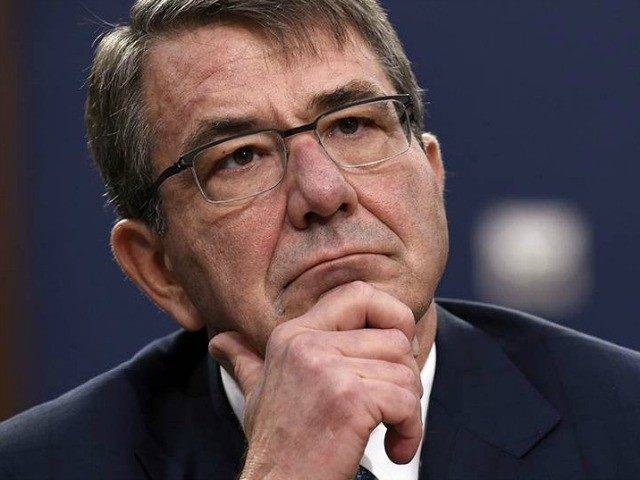New satellite images show the Chinese government has added fighter jets to its fleet in the Paracel Islands, a South China Sea chain that Vietnam and the Philippines claim. This development comes as U.S. Defense Secretary Ashton Carter lands in Manila to show his support for the Philippines against Chinese expansionism in the region.
Fox News reports that satellite images from ImageSat International (ISI) show at least two new fighter jets on Woody Island in the Paracel Island chain. The images, taken last week, clearly show two new Chinese Shenyang J-11 fighter jets, which Fox compares to American F-15 jets, as well as a “newly installed fire control radar system.” Fox notes that the radar system on the island may “pose a threat to civilian airliners in addition to U.S. military aircraft.”
The newly installed system is believed to allow full use of a surface-to-air missile system on the island, which satellite images had identified as having been installed there in February. China confirmed the presence of these systems in February, alarming neighboring Philippine officials.
“The stability of the region is being threatened because of the deployment of those kinds of weapons,” Vice Admiral Alexander Lopez, who is in charge of the Philippines’ South China Sea security operation, said then, “You don’t deploy those types of weapons unless you intend to use them.”
While Woody Island is the largest of the Paracel Islands and has space for construction, China has made clear it is not stopping its militarization efforts there. Reports surfaced in February that China has begun to build artificial islands in the Paracel Islands, following a two-year effort in the Spratly Islands that has turned a number of reefs into complete islands.
The United States has made clear its stance against China’s colonization of territory in the South China Sea. Beijing is claiming land belonging to Vietnam, the Philippines, Brunei, Taiwan, and Malaysia, and has placed its alleged national border perilously close to Natuna Island, an Indonesian territory.
To help support the Philippines, Defense Secretary Ashton Carter landed in Manila Wednesday and is expected to observe joint U.S.-Filipino military exercises featuring 4,400 American troops. Reuters notes that these joint exercises are part of a larger support effort involving a $425 million American investment in the Philippine Navy for the next five years.
The United States is expected to open five military sites in the Philippines in the near future, though the full number of bases completed as per a bilateral agreement signed last year is not limited. “The agreement provides for more sites in the future — so there [will] be more but these are just the five initial sites,” Carter told reporters Tuesday, explaining that the bases will provide a “rotational presence for U.S. forces to operate with and out of the Philippines in support of … friends and allies in the region in defense, not only of our own interests but in our wider interests.”
The closest of these five bases to disputed territory is Antonio Bautista Air Base, about 100 miles from the Spratly Islands. China recently announced the opening of a third illegally constructed lighthouse in the Spratly Islands.
Carter has made clear the United States will continue to maintain a presence in the region, repeating the mantra that the U.S. armed forces will “fly, sail, or operate anywhere international law allows.” He has personally sailed through disputed territory in a gesture of support to smaller nations refuting Chinese claims to their seas.
The region is not solely relying upon the United States, however, and the dispute is making unlikely allies. A staunch U.S. supporter, the Philippines has agreed to explore the possibility of joint surveillance drills in the region with communist Vietnam, nominally a Chinese ally whose government is increasingly concerned by China’s military behavior. “These are initial discussions. … These may take time but we would like to move to the next level,” a senior military official told Reuters about these talks, featuring Vietnam’s vice defense minister and his Philippine counterpart.

COMMENTS
Please let us know if you're having issues with commenting.